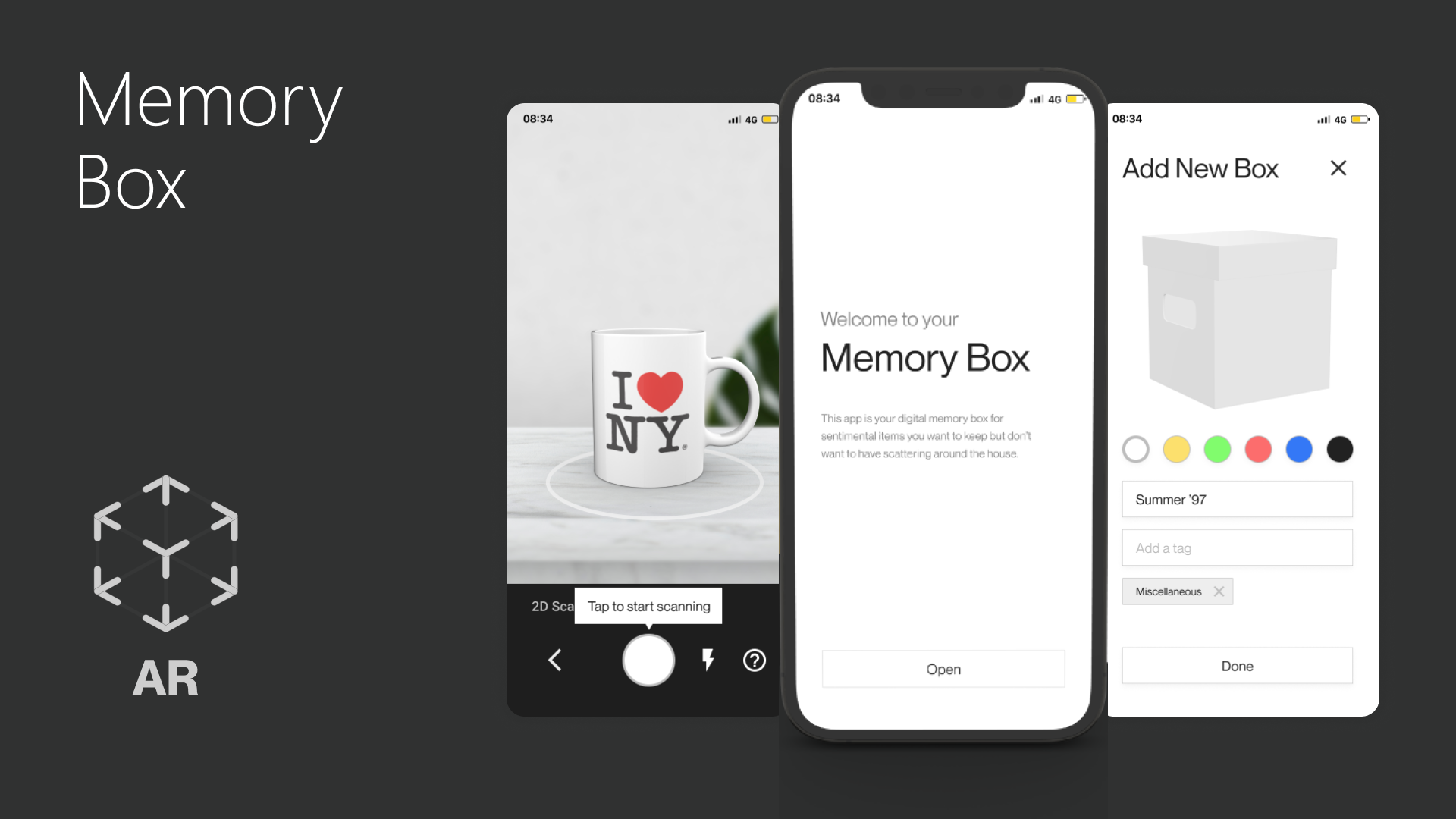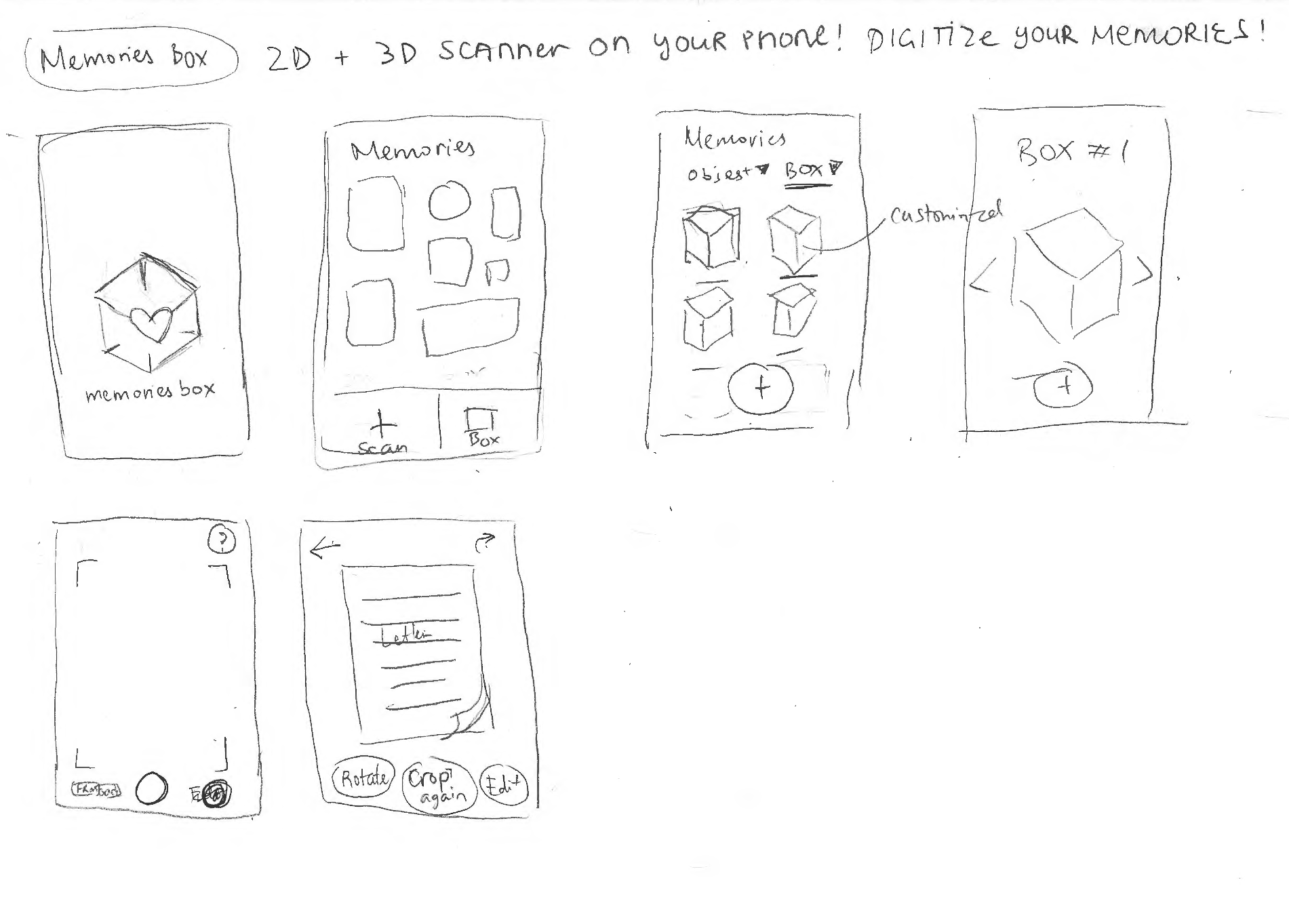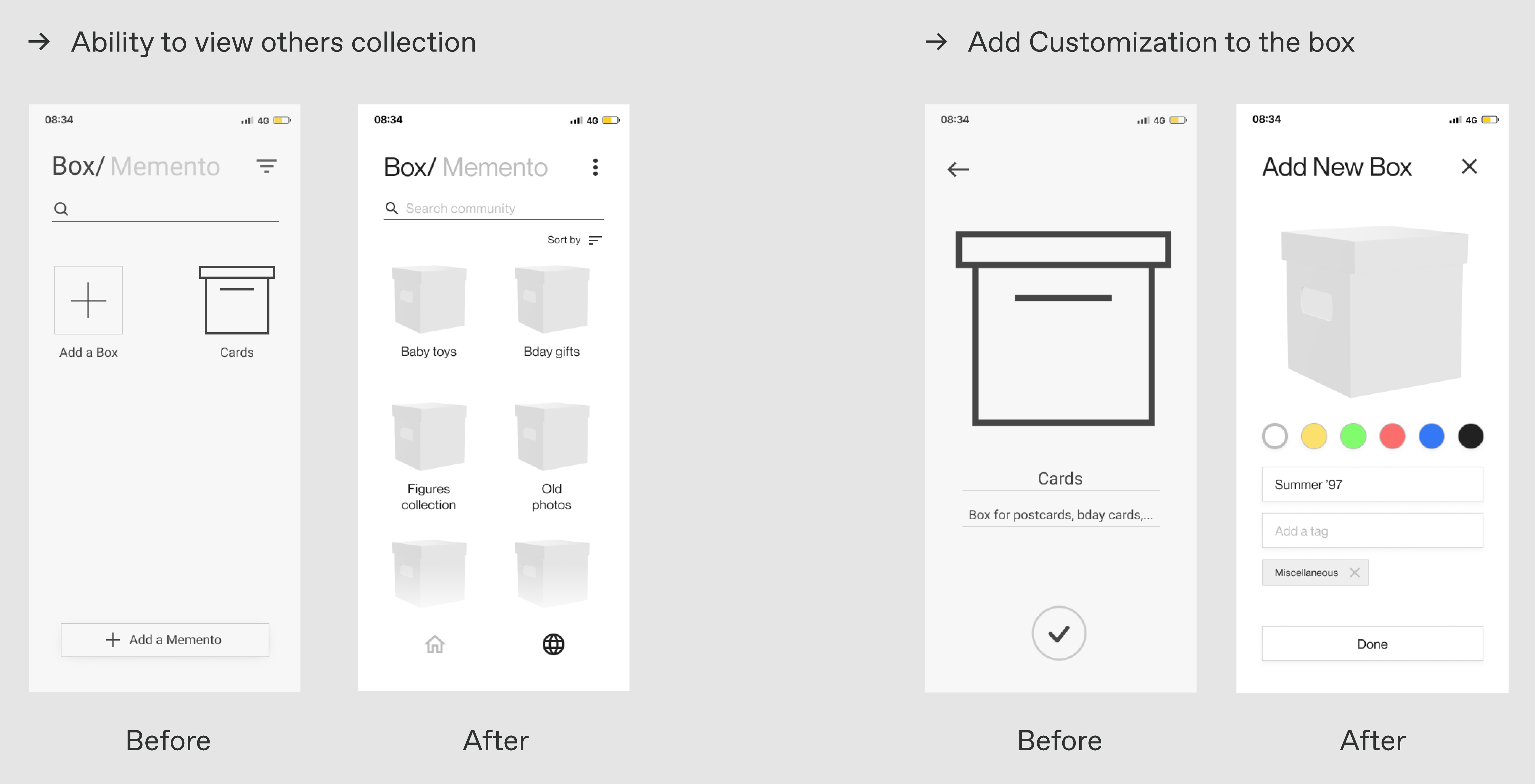
Memory Box
Capture memories, not clutter
AWARD RECEIVED
2022 American Advertising Awards
2022 American Advertising Awards
TEAM
Solo Project
Solo Project
︎ STUDENT PROJECT
While aspiring minimalists value simple living, letting go of items with emotional ties can be a major hurdle. Memory Box empowers these individuals by offering a digital solution to preserve cherished memories without physical clutter. Through 3D scanning technology, the mobile app allows users to capture meaningful objects digitally.
THE PROBLEM
Letting go is hard
Newcomers struggle to embrace minimalism due to emotional attachment to physical objects. They want a way to declutter while preserving cherished memories.
THE SOLUTION
3D Scanning and AR are keys
Memory Box, a mobile app utilizing 3D scanning and augmented reality (AR), empowers individuals to seamlessly transition to a minimalist lifestyle without sacrificing sentimental value.

Add a box to store your memento
- Store and categorize your memento in boxes.
- Customize your box by adding a label, tag, and colors.

Scan your memento
- Use 2D & 3D scan features to capture anything from a postcard to a giant teddy bear.
- Add objects to your boxes.

View your memento in AR mode
- View your treasured items through AR.
- Share them with friends and family.

Aspiring minimalists confess: The struggle with sentimental items
When interviewing people who pursues the minimalist lifestyle and researching online, I found a common problem that aspiring minimalists have is letting go of sentimental items.
![]()
“I don‘t want to throw away items that have special meaning to me. But I don’t love the clutter either.” - Anna (female, 25)

︎︎︎ Articles that talked about struggles of minimalists
Ideation
Through brainstorming exercises, I discovered the potential of 3D scanning to help minimalists preserve cherished memories digitally. Inspired by keepsake boxes, the app was named "Memory Box."
![]()

︎︎︎ Brainstorming sketches
Target audience
- Other 3D scanning apps in the market are mainly used by professionals.
-
This app would be catered to minimalists for scanning, storing, viewing, and sharing sentimental objects.
Figuring out specific user needs
To articulate how the app will create values for the users, I made a list of user stories that describe their goals and benefits.
![]() ︎︎︎ List of user stories
︎︎︎ List of user stories
 ︎︎︎ List of user stories
︎︎︎ List of user storiesSketching out user flows
I tried to visualize how the objects will be stored and viewed through sketches.
![]()

︎︎︎ Sketches of a user flow
Testing low-fidelity prototype
I developed a low-fidelity prototype to test out the idea. I joined a Minimalism online group and collected 13 responses for my prototype using the Maze remote testing platform.
Overall, testers found the app easy to navigate. Three major feedback were:
Overall, testers found the app easy to navigate. Three major feedback were:
- Ability to view other people's collections
- Ability to rotate cards in 3D viewer
- Ability to customize the box

︎︎︎ Low-fidelity prototype on Figma
Crafting a minimal design system
The app's design needed to echo the minimalist lifestyle. Clean lines, a timeless typeface, and subtle interactions combine to create a calming experience.

Four major iterations
I identified the screens that were causing misclicks during user testings and made improvements.


The final design
︎︎︎ View the full prototype on Figma.
If I had more time, I would...
- Improve the visual design and interactions to be more engaging.
- Test the design with screen readers and other assistive technologies.
- Gather additional user feedback to identify pain points or areas for improvement.